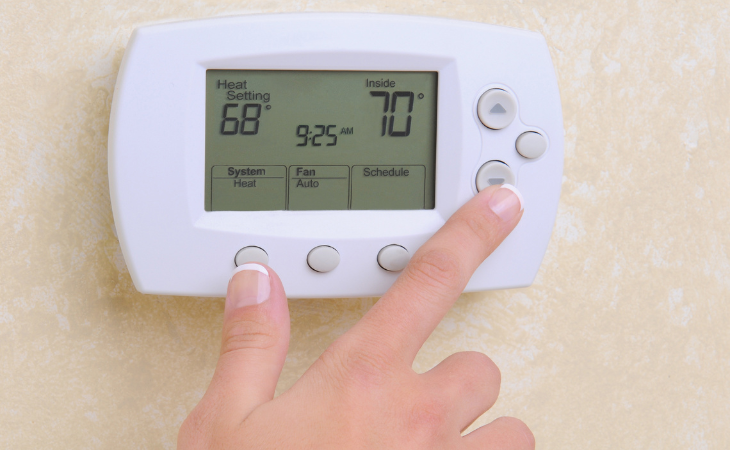Did you know that the key to a longer, healthier life might be found in the thermostat setting of your bedroom? Researchers have spent decades attempting to determine the optimal sleep duration, but a revolutionary study has recently revealed the critical function of bedroom temperature in improving sleep quality.
The Science of The Total Environment recently featured a study that investigated the potential impact of different bedroom temperatures on the sleep quality of older adults. The study comprised a rigorous analysis of sleep habits and ambient factors over an astounding 11,000 nights of sleep among a cohort of 50 participants, all of whom were 65 years or older, in order to acquire comprehensive results.
Related: A Guide to Sleep Deprivation and Better Napping
This study's outcomes suggest that, when comparing older adults to their younger counterparts, maintaining nighttime temperatures within the 68 to 77°F range may enhance sleep quality. Any variation beyond this range could result in a notable 5-10% reduction in sleep quality.
Ideal sleep temperature

Past research has consistently demonstrated that even a modest 10 percent decrease in sleep efficiency can lead to a range of adverse consequences, including impaired cognitive function, heightened stress and anxiety levels, increased fatigue, and disruptions in the body's ability to regulate blood sugar.
As global temperatures rise, these findings highlight the critical need to enhance thermal comfort within residential environments, with a particular focus on facilities such as elderly care homes and public housing. Emerging studies are exploring innovative solutions that extend beyond traditional air conditioning, including the use of reflective paints and advanced building materials.
"As we grapple with the broader implications of climate change, we must not overlook its potential impact on something as fundamental as sleep," says Amir Baniassadi, an engineer and health researcher at Harvard Medical School, who led the study.
Related: A Complete Visual Guide to Sleep Apnea
The bedroom's temperature significantly impacts your body's ability to regulate its temperature throughout the night, according to Dr. Raj Dasgupta, the chief medical advisor for Sleepopolis. During sleep, our body temperature undergoes natural fluctuations that sync with our internal circadian rhythm, he explains. These temperature shifts play a pivotal role in ensuring a restful night's sleep.
Excessively high bedroom temperatures can disrupt the body's cooling mechanisms, making it challenging to initiate sleep and causing an uptick in sleep disturbances, he adds.
For a restful night's sleep, Dr. Dasgupta recommends maintaining the room temperature between 60 and 69 °F. The body can efficiently cool down, regulate its temperature, and facilitate the various phases of the sleep cycle within this temperature range. Interestingly, the study suggests that slightly warmer conditions could be advantageous for older adults.

Unlike many sleep studies conducted within sterile, temperature-controlled laboratories, this groundbreaking research took place in the comfort of participants' own homes. Specifically, individuals aged 65 and above had their bedrooms equipped with indoor air temperature and humidity sensors, while simultaneously wearing a ring-like device during their sleep.
This device meticulously recorded critical parameters such as sleep patterns, skin temperature, heart rate, and movement. In total, the research team gathered a sizable dataset, including about 11,000 person-nights of sleep and environmental data for thorough analysis.
Although temperatures of 68 to 77 °F promoted the most restful sleep, the study found that each person has their own optimal temperature range for sleep, which may even change over time.
The study's authors recommend fine-tuning your personal sleep environment by making small changes like improving air circulation and opting for lightweight sleep clothing. Yet, it's important to recognize that achieving significant improvements in the building's thermal comfort may yield more substantial benefits, albeit with greater complexity and expenses.
Related: Breathing Exercises that Help You Sleep
While most participants reported fairly high living standards, they lived in a variety of housing types, from small government-subsidized apartments to private single-family homes.
"Our study underscores the potential impact of climate change on sleep quality in older adults," Baniassadi and his colleagues write in their paper, "particularly those with lower socioeconomic status."
In addition, those residing in social housing and renters, who frequently inhabit older structures lacking adequate insulation against temperature fluctuations, require home modifications to ensure comfort amid rising temperatures day and night in cities worldwide.
To achieve this objective, system-wide policies need to be developed to improve construction standards for new construction, to better insulate existing houses, and to provide subsidies to encourage the adoption of solar panels so that all people have access to affordable power.
 Go to BabaMail
Go to BabaMail





















































